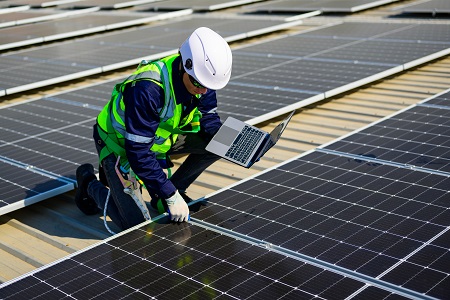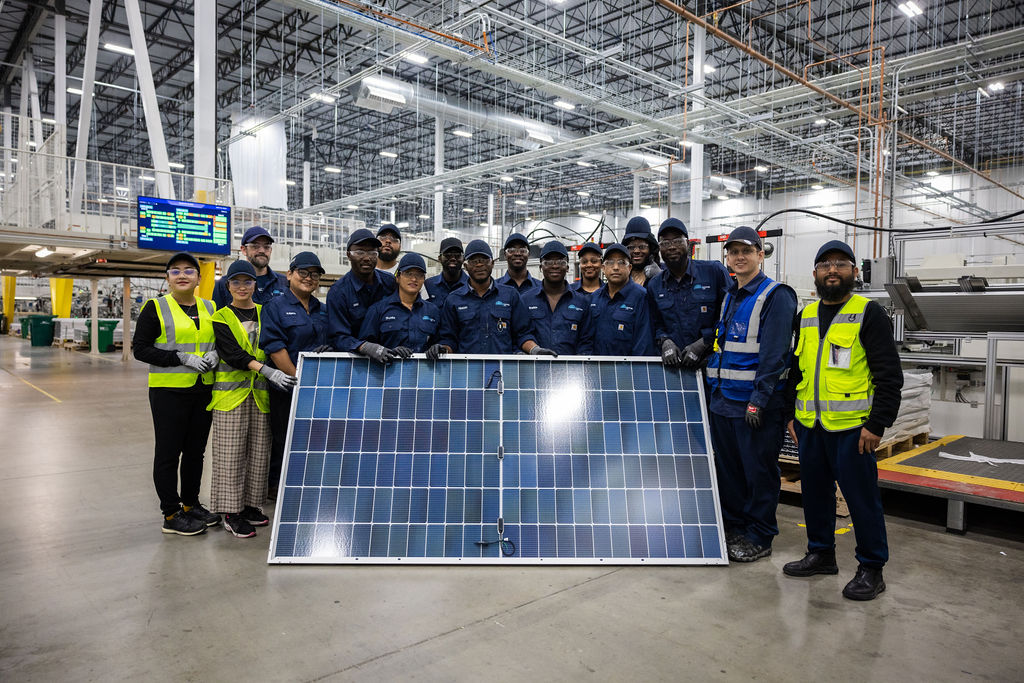Long Term Solar Savings PA: Our Firm Specializes In The Setup And Management Of Photovoltaic Energy Systems
History and Advancement of Solar Panel Companies
The inception of photovoltaic panel companies can be traced back to the 1800s when Alexandre Edmond Becquerel found the photovoltaic effect. Would he have envisioned how his discovery would transform the way we harness energy?
Early Beginnings

In 1954, Bell Labs developed the very first practical photovoltaic cell. This marked a substantial milestone in the history of solar energy. They were at first used to power space satellites, however who knew this was just the start?
Advancement and Development
- In the 1970s, an energy crisis resulted in increased interest in renewable resource sources, including solar power.
- By the 1990s, developments in technology and increasing environmental awareness resulted in the development of solar panel companies worldwide.
A New Age
As we entered the 21st century, the solar industry experienced a rapid growth. The demand for tidy and renewable energy caused a new age in the solar panel market.
Remarkable Truths
- The world's very first solar power station was integrated in 1982 in Hisperia, California.
- By 2019, solar power had actually become the world's fastest-growing source of power.
The journey of solar panel companies has been remarkable, hasn't it? The future holds enormous capacity, with constant developments paving the way for a sustainable future. Can we imagine a world powered completely by solar power?
Moving Forward
Today, photovoltaic panel companies continue to innovate, pursuing more effective and cost-efficient options. The advancement of solar energy has actually come a long method, and yet, the journey has simply started.
The Core of Photovoltaic Panel Production
Ever question what goes into developing those glossy, sun-loving photovoltaic panels? The procedure is as impressive as completion product (Affordable Solar Panels PA). High-purity silicon, the main component in photovoltaic panels, goes through numerous transformations to ensure its effectiveness and sturdiness
From Sand to Silicon
Crystalline silicon, the backbone of a lot of solar panels, stems from basic sand. It's an interesting journey, isn't it? The sand goes through a high-temperature reaction with carbon to form silicon. However, this isn't simply any silicon. The silicon used in photovoltaic panels is "solar-grade," with a pureness of 99.9999%. It's this pureness that allows the panels to successfully convert sunshine into power.
Ingot Formation
When the silicon is pure enough, it's time to form ingots. Picture a large, round block of strong silicon. How is this accomplished? Through a process called Czochralski procedure, where the silicon is melted and then slowly recrystallized. It's a sluggish dance of science, resulting in a strong product that is almost as pure as the raw silicon itself.
Slicing into Wafers
The ingots are then sliced into wafer-thin pieces, like slicing a loaf of bread. Each piece is a potential solar battery, waiting to harness the power of the sun. Did you know that the silicon wafers are just about 200 micrometers thick? That has to do with half the density of a human hair! The process requires precision and persistence, however the outcome is a set of wafers all set to be developed into solar batteries.
Producing Solar Battery
With the wafer ready, it's time for the magic to take place. The silicon wafer is 'doped' with other elements like phosphorous and boron to develop an internal electrical field. It's this field that enables the conversion of sunshine into electricity. Complex, isn't it?
Assembly and Quality Assurance
Solar cells are like puzzle pieces that come together to form a photovoltaic panel. The cells are soldered together in a grid-like pattern, then covered with a protective layer of glass. The final step includes rigorous quality control checks. It's necessary that every solar panel carries out at its peak, would not you concur?
Insider Pointer
Constantly remember that even the most optimally produced photovoltaic panel can lose effectiveness due to dirt and particles accumulation. Routine cleansing can considerably improve your panels' performance.
Comprehending the Environmental Impact of Solar Panel Companies
Ever considered the ecological footprint of a photovoltaic panel company? Green technology, such as solar, has transformed our energy landscape, however what about the behind-the-scenes effect?
The Production Process: A Double-Edged Sword
The production process for photovoltaic panels requires a considerable amount of energy. This process, referred to as 'em bodied energy', can be deemed a kind of 'energy financial obligation'. It's a little like borrowing today's sunshine to power tomorrow's energy needs. Stress not, the energy repayment time is often shorter than you 'd believe!
- The energy payback duration for solar panels is normally 1-4 years.
- After this period, the energy produced is essentially carbon-free.

Life After Decommission
And what takes place when a solar panel reaches the end of its life-span? Can it simply be tossed into the garbage? No, that wouldn't be really green, now, would it?
A viable option is recycling. While photovoltaic panel recycling is still in its infancy, it holds a world of potential. Recycling not only keeps products out of landfills however also lowers the need for new basic materials.
Responsible Sourcing: More Than A Buzzword
Where does the silicon originated from, you ask? The market's need for silicon and uncommon minerals can lead to damaging mining practices. Accountable sourcing is for that reason crucial to decrease hazardous environmental effects.
Reduced Carbon Emissions: The Bigger Photo
Let's not forget the larger image: solar energy substantially decreases carbon emissions. When installed, solar panels produce clean, renewable resource, balancing out check here their preliminary production footprint.
In short, the environmental effect of solar panel business is a complicated concern. However, with accountable practices, the promise of a cleaner, greener future is well within our grasp.

Financial Performance and Market Share of Solar Panel Business
Ever questioned why some photovoltaic panel companies - Top Rated Solar Installers PA beat others in the market? What sets them apart? The crucial depend on their financial efficiency and market share
Financial Performance: A Crucial Indication
Financial performance plays a critical role in the success of any company. For photovoltaic panel business, it's no different. Strong monetary performance enables these companies to purchase advanced technology, research study, and development, thus creating top quality, effective photovoltaic panels.
How do they accomplish this? With a focus on cost performance and strategic financial investments. Business that manage to reduce production costs without jeopardizing on quality tend to fare better in the market.
Market Share: A Measure of Success
Market share, on the other hand, is a direct reflection of a company's popularity amongst customers. A high market share implies more homeowners are selecting their photovoltaic panels over rivals.
So, what's the secret recipe for acquiring a bigger market share? It comes down to customer satisfaction and brand name reputation. Companies that prioritize client requirements and preserve a positive brand image are most likely to catch a larger share of the market.
- Client Complete satisfaction: Solar panel companies that deliver trusted items and extraordinary client service tend to have greater customer fulfillment rates.
- Brand Credibility: A strong brand reputation is constructed in time through constant shipment of quality services and products.
Financial Performance and Market Share: The Symbiotic Relationship
Remarkably, the relationship between financial performance and market share is not one-sided. They feed off each other. A strong monetary performance can increase a business's market share, while a high market share can improve financial efficiency.
As a solar panel business, balancing these 2 elements is crucial for long-term success. A business that neglects either of them might discover it challenging to preserve its position in the competitive solar industry.
The Takeaway
What does all this mean for you? Whether you're a homeowner looking to install solar panels or an investor eyeing the solar industry, comprehending the financial performance and market share of photovoltaic panel business is essential. They are key indications of a business's health and capacity for future development.